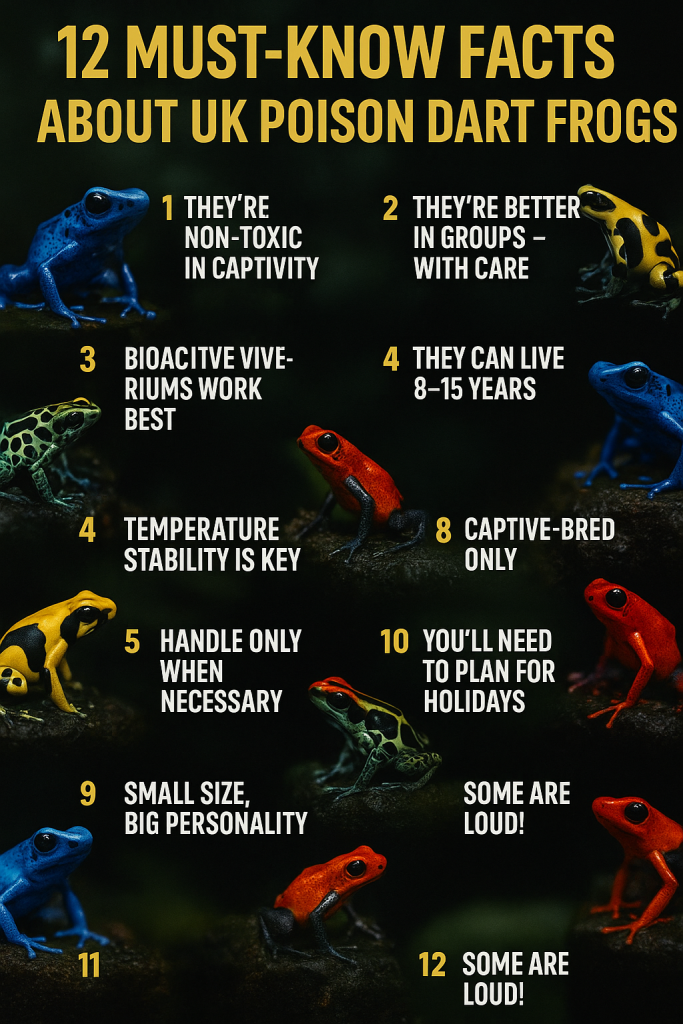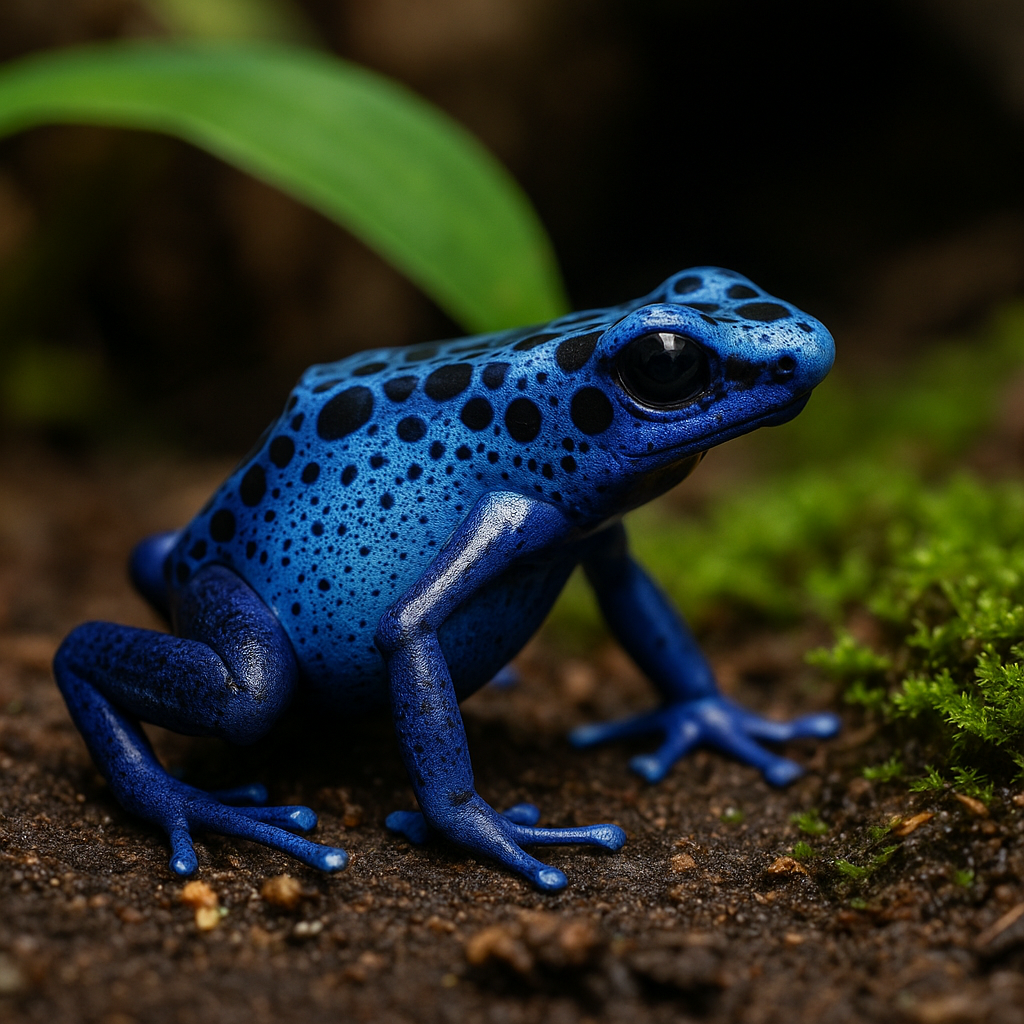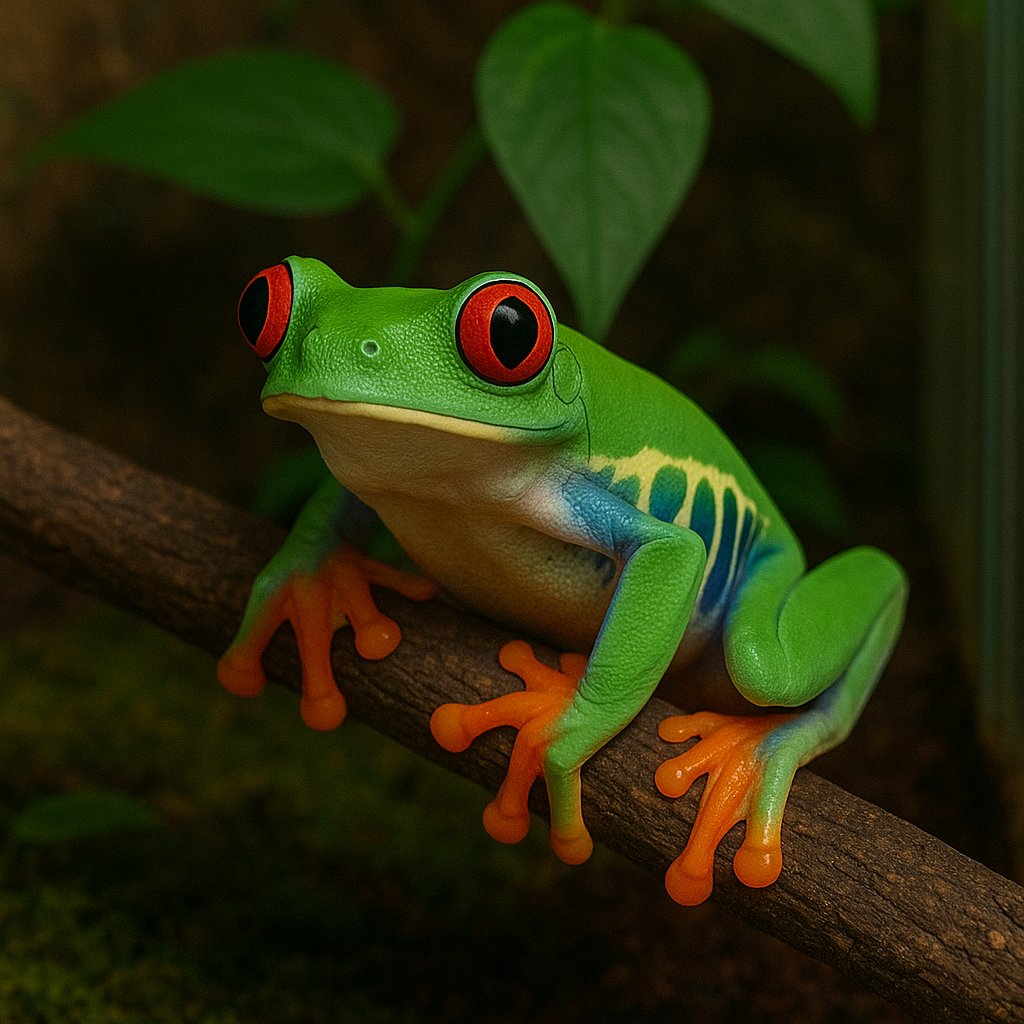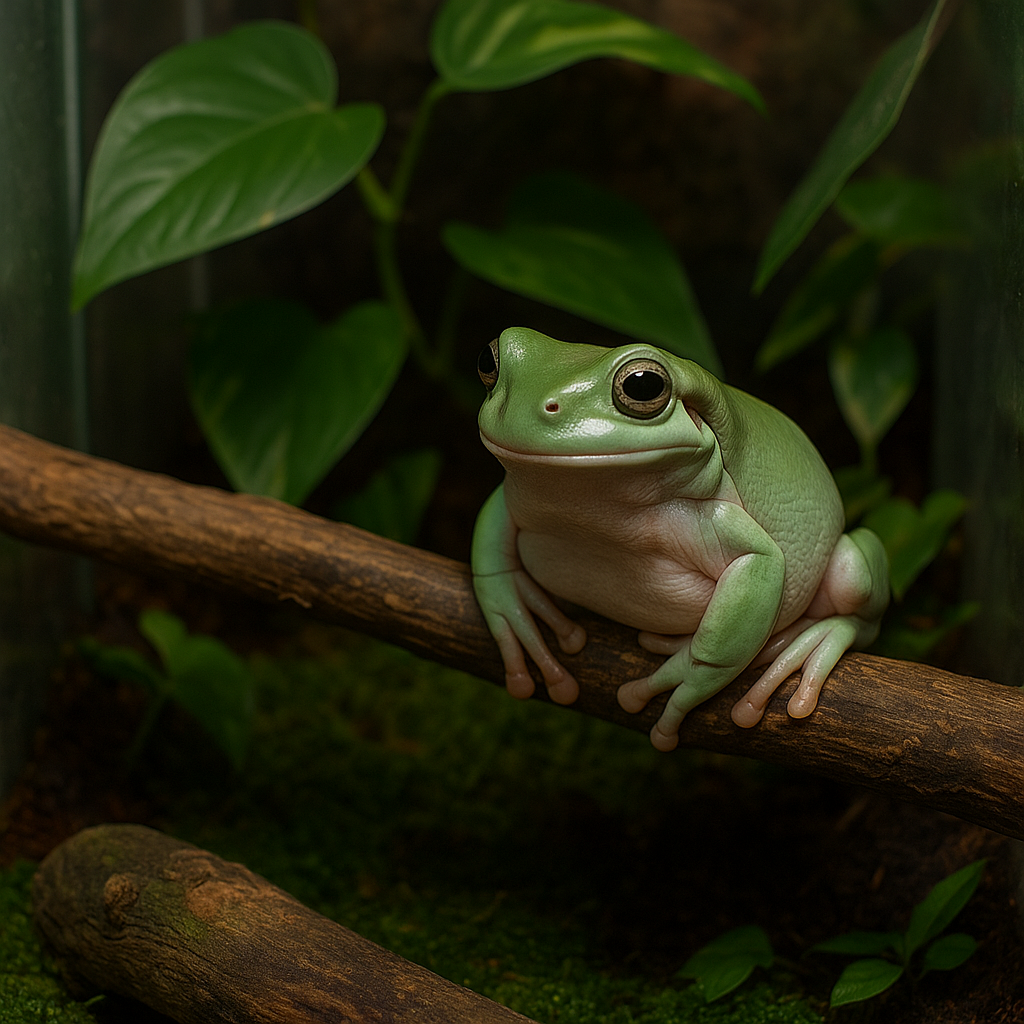If you’ve ever stood in front of a vivarium and felt your jaw drop at the sight of a neon-blue frog sitting calmly on a leaf, you’ll understand why poison arrow frogs have become one of the UK’s most captivating exotic pets. Known in the scientific world as members of the family Dendrobatidae, they’re living jewels — small, active, and bursting with colour.
But keeping them in the UK isn’t as simple as buying a glass box and sprinkling in some moss. There are nuances — from dealing with our damp winters and over-zealous radiators to knowing which species actually thrive in British homes. Whether you call them poison arrow frogs or poison dart frogs, this guide will walk you through 12 essential facts and care tips that every UK keeper needs to know.
What Makes Poison Arrow Frogs Special?
Poison arrow frogs aren’t just pretty faces. In the wilds of Central and South America, they’ve evolved vivid warning colours — electric blues, deep reds, high-contrast greens — to signal their toxicity to predators.
In captivity, though, they’re non-toxic (more on that later), making them safe to keep while still dazzling you with their appearance.
Their small size (often just 2–5 cm for many species) makes them perfect for planted vivariums, and unlike some amphibians, they’re active during the day — meaning you’ll actually see them without staying up until midnight.
From Rainforest to Radiator: Habitat Differences in the UK
Wild poison arrow frogs live in warm, humid rainforests, often found hopping through leaf litter or clinging to low vegetation near streams.
The UK… well, we have central heating, unpredictable seasons, and dry indoor air in winter. That means your vivarium needs to compensate.
- Temperature: Aim for 22–27°C during the day, slightly cooler at night.
- Humidity: Keep between 70–90%, using a misting system or regular hand-spraying.
- Lighting: 12-hour light cycles with low-level UVB to support calcium metabolism.
If you’re building your first enclosure, start with a vertical glass vivarium and read our guide on collecting safe leaves for vivariums — your frogs will thank you.
Species You’ll Actually Find in the UK
While the internet is full of exotic morphs, not all are commonly available or legal in the UK. The following species are the main stars of the UK frog scene — all available as captive-bred stock from reputable breeders like Frogfather’s Dart Frogs for Sale:
- Blue Poison Dart Frog (Dendrobates tinctorius “Azureus”) – Striking electric blue with black spotting.
- Green and Black Poison Frog (Dendrobates auratus) – Iridescent green patterning on a dark body.
- Strawberry Poison Frog (Oophaga pumilio) – Tiny, bold, and found in a variety of morphs.
- Dendrobates tinctorius ‘Cobalt’ – A deep blue and black beauty, available as juveniles here.
- Ranitomeya species – Small, climbing dart frogs often with intricate patterns.
12 Facts & Care Tips for UK Poison Arrow Frogs
1. They’re Non-Toxic in Captivity
Wild frogs get their toxins from their diet of certain ants, mites, and beetles. UK-bred frogs eat fruit flies, springtails, and pinhead crickets — no toxins here.
2. They Need Live Food
Forget pellets or dried bugs. You’ll be culturing fruit flies and springtails in your kitchen — and possibly explaining to visitors why there’s a jar of moving dots by the kettle.
3. Bioactive Vivariums Work Best
A live-planted, self-cleaning setup reduces stress and keeps humidity stable. This means live plants, leaf litter, isopods, and springtails.
4. Temperature Stability is Key
Avoid temperature swings from open windows or direct sunlight. Digital thermometers are your friend.
5. High Humidity Doesn’t Mean a Swamp
Aim for moist substrate and good airflow. Stagnant, wet environments can cause fungal and bacterial issues.
6. They’re Better in Groups — With Care
Most species thrive in small same-species groups, but mixing species is risky and can cause hybridisation.
7. They Can Live 8–15 Years
A long-term commitment. Think more like adopting a parrot than a goldfish.
8. Captive-Bred Only
Wild-caught frogs are a conservation and ethical no-go. Always buy from licensed UK breeders — see our buying guide.
9. Handle Only When Necessary
Their delicate skin absorbs chemicals. Use clean, damp hands if you must handle, but generally observe, don’t grab.
10. Small Size, Big Personality
Watch them hunt, call, and interact — much more active than many amphibians.
11. You’ll Need to Plan for Holidays
Frogs need daily feeding. Arrange a competent frog-sitter who can manage live food cultures.
12. Some Are Loud!
Males call to attract females. It’s charming at first, less so if you sleep nearby.

The Truth About Their Toxicity in Captivity
Captive poison arrow frogs are safe because they lack the specialised diet that produces toxins in the wild. Even so, their skin is sensitive — so we treat them with the same care we’d give a delicate orchid.
UK Conservation & Ethical Keeping
Institutions like Chester Zoo and London Zoo run breeding and awareness programs to preserve rare dart frog species.
By buying only captive-bred frogs, UK keepers directly reduce pressure on wild populations.
Common Mistakes UK Keepers Make
- Using open-top tanks → humidity drops fast in UK homes.
- Overfeeding → leftover food attracts mites.
- Skipping UVB → long-term calcium issues.
- Mixing incompatible species.
Final Thought from a Frogkeeper’s Chair
Keeping poison arrow frogs in the UK is part science, part art — and entirely rewarding. They’re not just pets; they’re living rainforest ambassadors, bringing a splash of the tropics into your home. Get their environment right, and you’ll have front-row seats to some of the most beautiful behaviours in the amphibian world.



